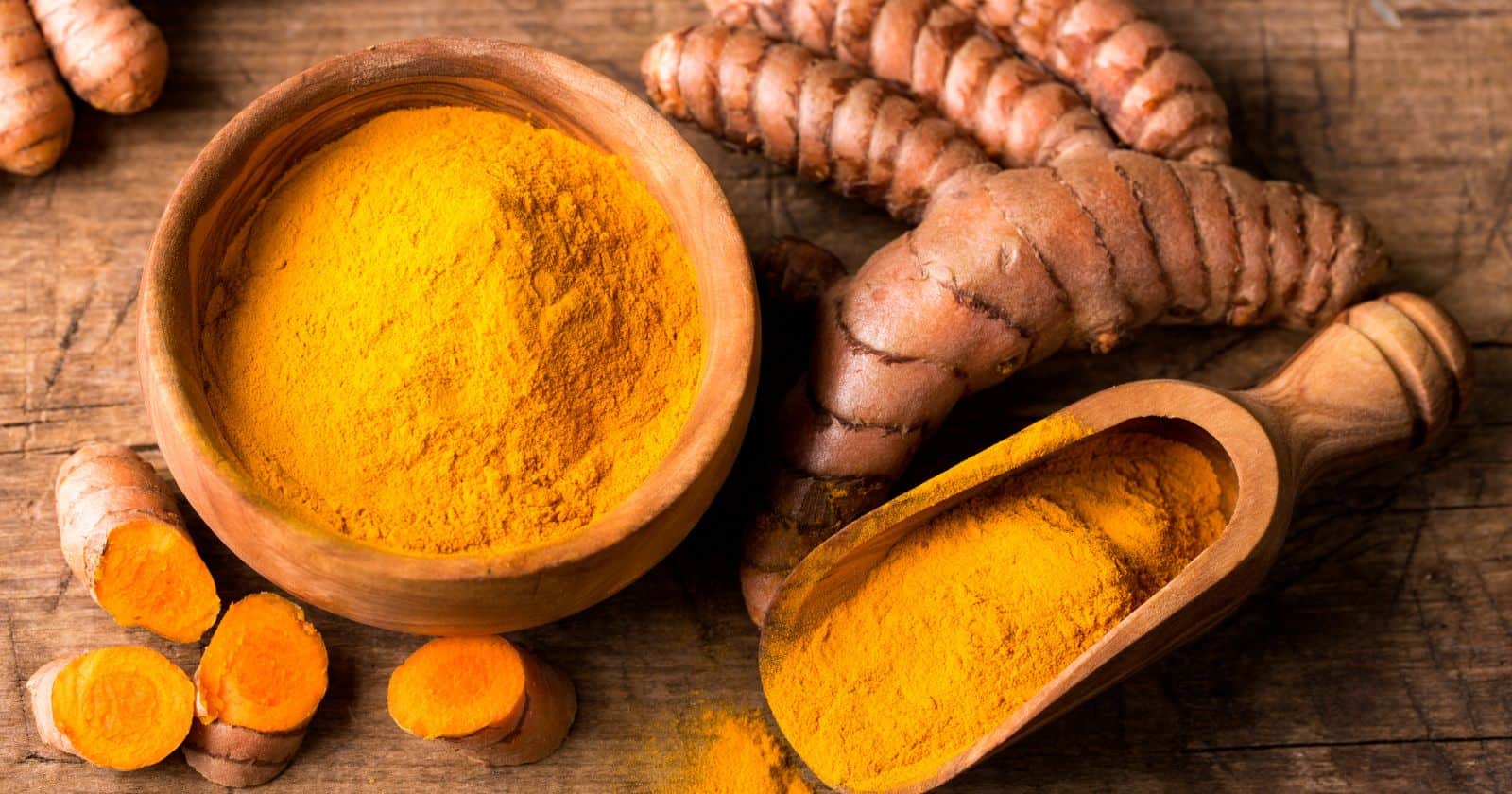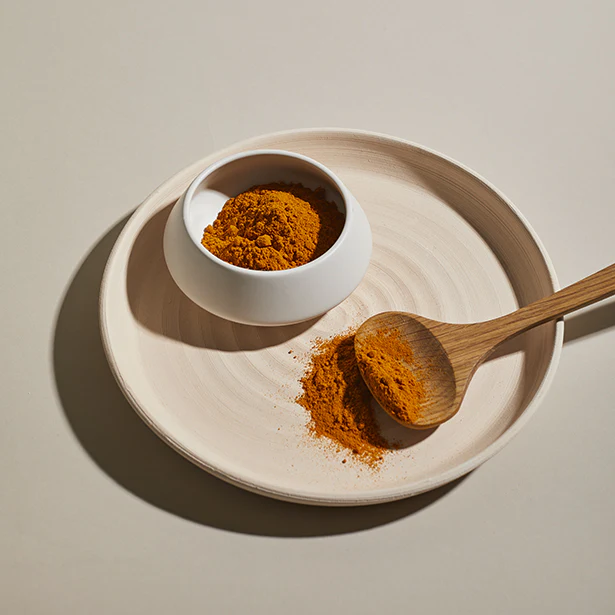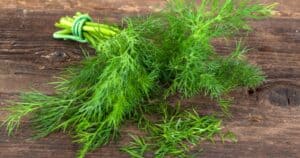Are you tired of relying on over-the-counter medication to relieve inflammation, pain, and digestive issues?
Many people struggle with these health concerns, which can significantly impact their daily lives and overall well-being.
Turmeric, a bright yellow
In this blog post, we’ll explore the many health benefits of turmeric and curcumin, including how they can help alleviate pain, improve digestion, boost brain function, and more.
We’ll also discuss the best ways to incorporate turmeric into your diet and highlight some delicious recipes that feature this flavorful
Whether you’re looking to manage chronic pain, support your immune system, or add variety to your meals, turmeric may be just what you need. So, let’s dive in and discover the wonders of this vibrant
What is Turmeric?
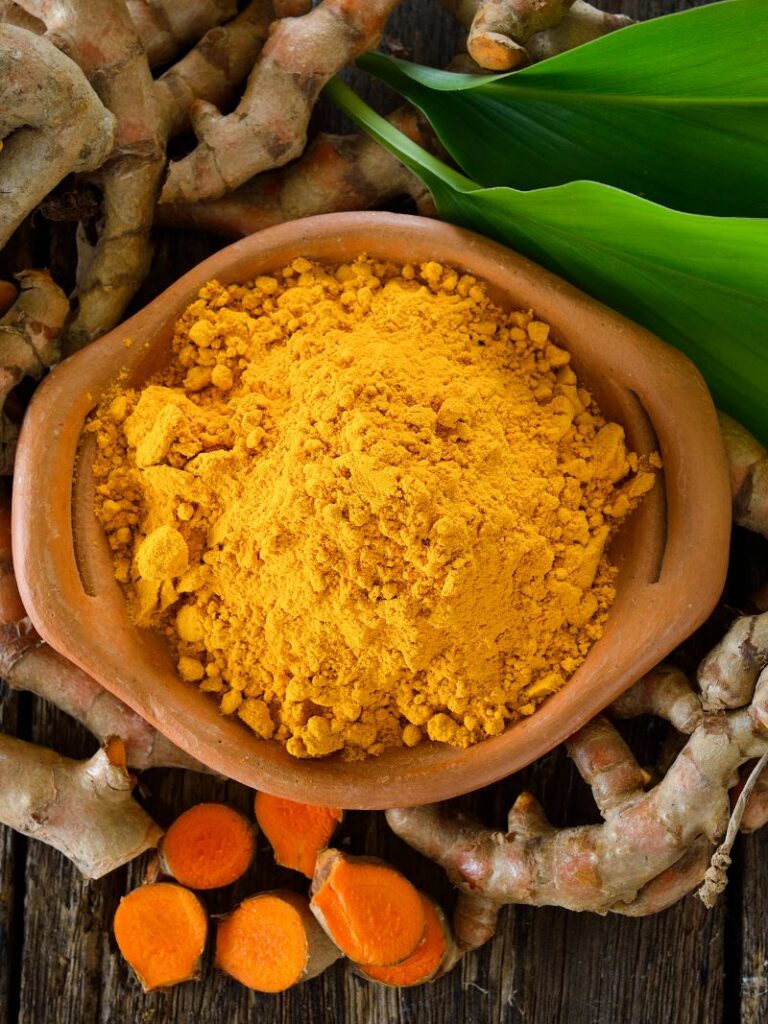
Turmeric is a
Originating in Southern India and Indonesia, this ancient
Its use goes beyond just as a food colorant, medicine, or cosmetic ingredient, as it is also known for its supposed properties in folk medicine.
Most notably, modern scientific studies have identified turmeric as having antimicrobial, antioxidant, and anti-inflammatory properties and some anticancer activities.
Coupled with its immense flavor and red-orange hue, turmeric has quickly become one of the most popular spices around the globe – gaining recognition for its culinary and medicinal use.
One of the main reasons why turmeric has recently gained so much attention is its powerful health benefits.
Here are some of the most common uses of turmeric:
Culinary
Turmeric is commonly used to add flavor, color, and nutrition to various dishes, including curries, rice dishes, soups, and stews.
It can also make beverages like golden milk lattes and turmeric tea.
Medicinal
Turmeric has been used for thousands of years in traditional medicine to treat various health concerns, including inflammation, pain, digestive issues, and infections. Some cultures also use it to promote skin health and wound healing.
Beauty
Turmeric is sometimes used in beauty and skincare products for its potential antioxidant and anti-inflammatory properties.
It can be used in face masks, scrubs, and other treatments to improve the appearance of the skin and reduce inflammation.
Dyeing
The bright yellow color of turmeric makes it a popular natural dye for fabrics and other materials.
Health Benefits Of Turmeric
Turmeric has recently become a topic of great interest due to its purported health benefits. This
However, studies show no conclusive health benefits because of its low bioavailability. Turmeric only contains around 3% curcumin, which provides these healing qualities.
While the effectiveness of turmeric for medicinal purposes remains disputed, this is not to say it cannot be used as an alternative form of medicine.
Research suggests that consuming larger amounts of turmeric in combination with black pepper and healthy fats can improve its absorption and maximize its benefits.
Here are some of the potential health benefits of turmeric, backed by scientific research:
- Turmeric contains curcumin, a powerful anti-inflammatory compound that may help alleviate pain, swelling, and inflammation.
- Curcumin may also have antioxidant properties, which can help protect the body from damage caused by free radicals.
- Turmeric may improve brain function and reduce the risk of brain diseases like Alzheimer’s and depression.
- Curcumin may help lower the risk of heart disease by improving blood vessel function, reducing inflammation, and lowering cholesterol levels.
- Turmeric may help manage digestive issues like irritable bowel syndrome (IBS), inflammatory bowel disease (IBD), and ulcerative colitis.
- Curcumin may have anti-cancer properties and could help prevent or treat certain types of cancer.
- Turmeric may have immune-boosting properties and could help fight off infections and illnesses.
It’s important to note that while turmeric has many potential health benefits, more research is needed to understand its effects on the body fully.
It’s also important to speak with a healthcare provider before using turmeric supplements, especially if you’re taking medication or have a health condition.
Culinary Uses Of Turmeric: Spices, Seasonings, And Traditional Dishes
Turmeric, a bright yellow rhizome root, has been used in India for millennia as a
Cooks all around the world appreciate its mild flavor and strong color. It’s one of the most popular ingredients to make curry dishes and is also used in North African and Middle Eastern teas.
This incredible herb can be added to soups, stews, or scrambled eggs to increase any dish’s nutritional value instantly.
Even more exciting is that turmeric can frequently combine with other spices such as cardamom, cinnamon, clove, garlic, ginger, lemon grass, pepper, and more to make a delicious meal!
Here are some delicious recipes that feature turmeric:
Sate Ayam
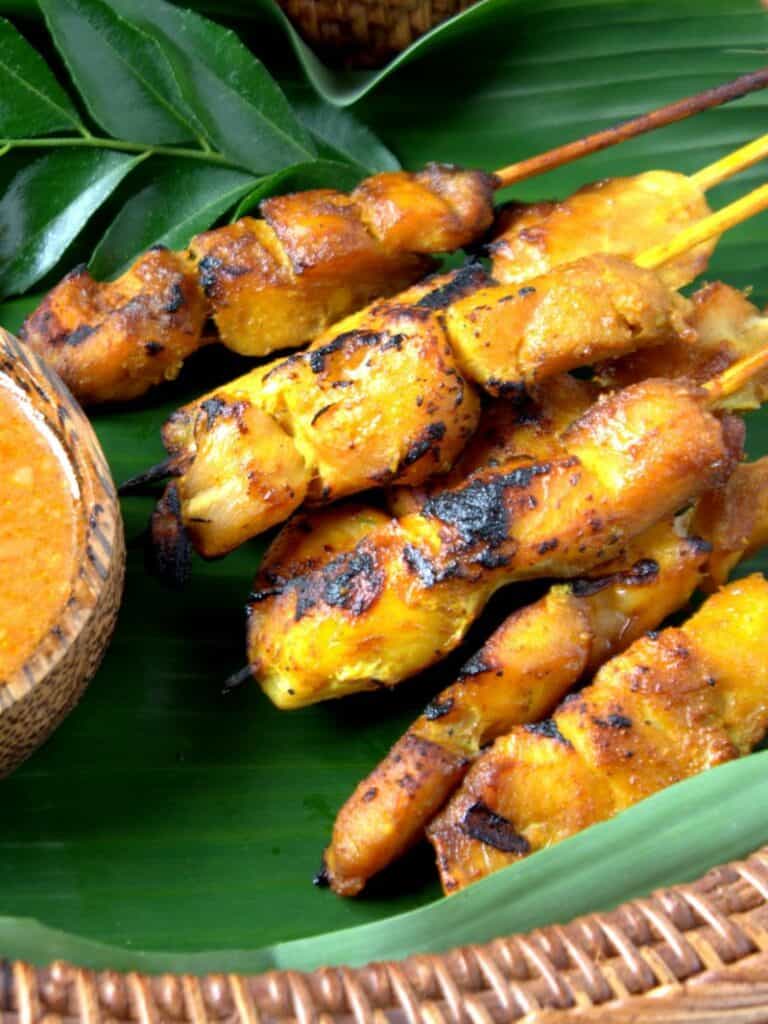
Sate Ayam is an Indonesian dish featuring skewered, grilled chicken with a flavorful peanut sauce.
The chicken is marinated with turmeric, garlic, and other spices before being grilled over charcoal.
Once the chicken is cooked, it’s served with a dipping sauce made from ground peanuts, kecap manis (sweet soy sauce), and other seasonings like chili and lime juice.
Turmeric Rice
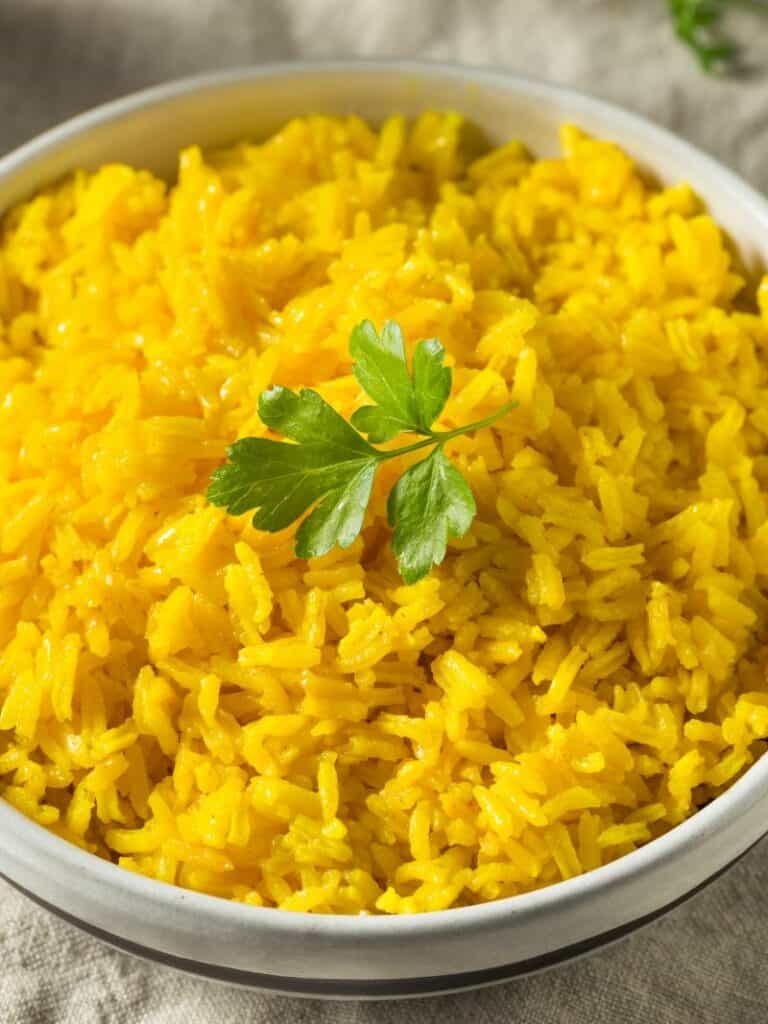
Add turmeric to your favorite rice recipe for a vibrant and fragrant side dish that pairs well with chicken, fish, or vegetarian curries.
Golden Milk Latte
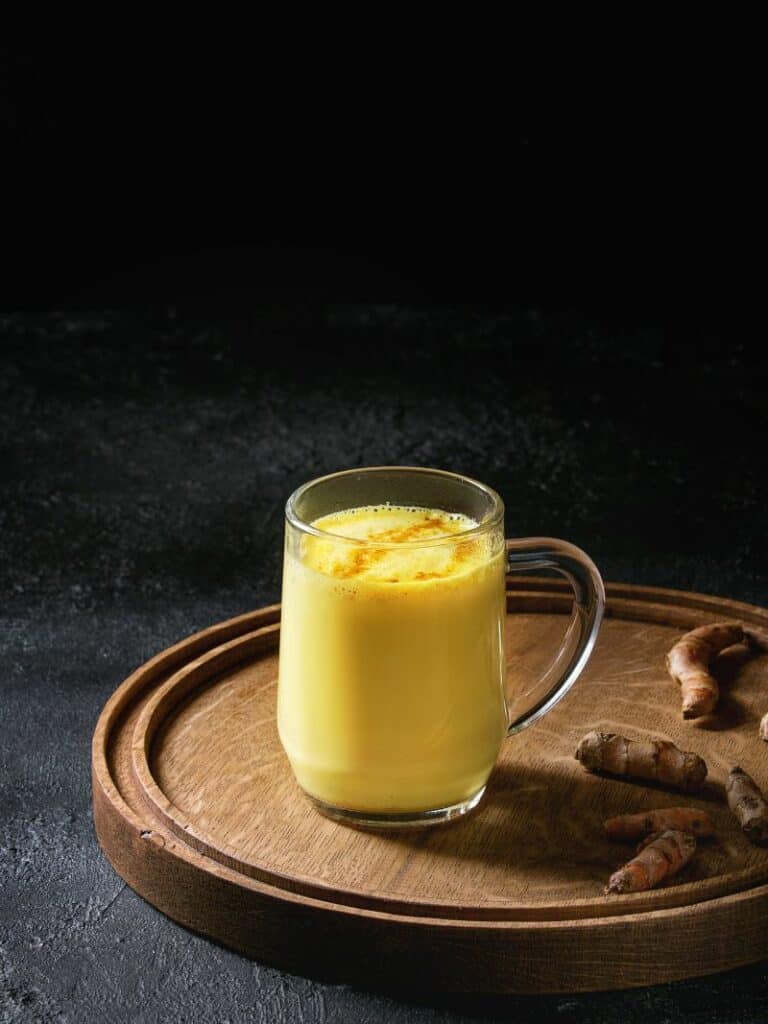
This popular beverage combines turmeric, ginger, and other warming spices with milk or a plant-based alternative for a comforting and nutritious drink.
Turmeric Roasted Vegetables
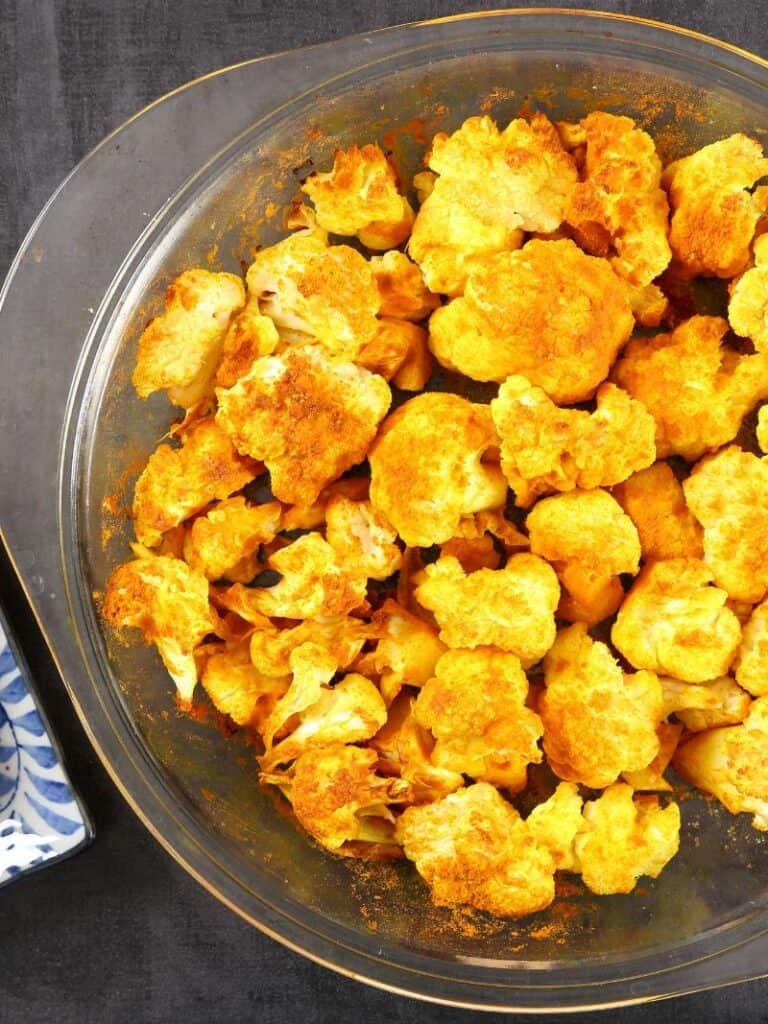
Toss carrots, cauliflower, or other vegetables with turmeric and olive oil, then roast in the oven for a flavorful and healthy side dish.
Turmeric Lentil Soup (Dal)
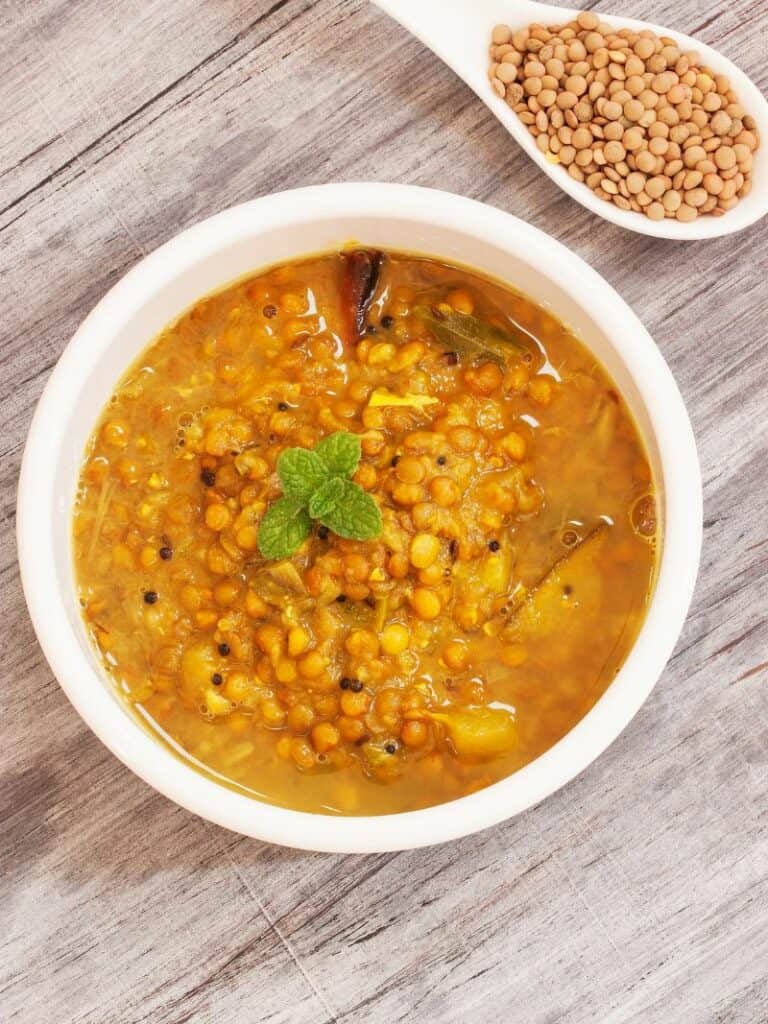
This hearty and flavorful soup combines lentils, vegetables, and turmeric for a nutritious and satisfying meal for cold weather.
How To Choose And Store Turmeric: Fresh Vs. Powdered
When buying turmeric, you have two options: Fresh or powdered.
Fresh turmeric has a higher moisture content and superior texture than its dried counterpart.
You can tell it’s fresh when the rhizomes have a slightly orange-yellow hue and are smooth and firm. If refrigerated correctly, fresh turmeric will last for about three weeks.
When using it in recipes, for each tablespoon of turmeric powder called for in a recipe, you can use three tablespoons of fresh turmeric instead.
However, if the recipe requires cooked turmeric, the fresh variety may not be your best choice as it does not work well with heat.
Dried turmeric, on the other hand, is made by boiling and drying out the rhizomes to remove moisture. It lasts longer than fresh turmeric and offers a more concentrated flavor.
Turmeric Supplements: Benefits And Precautions
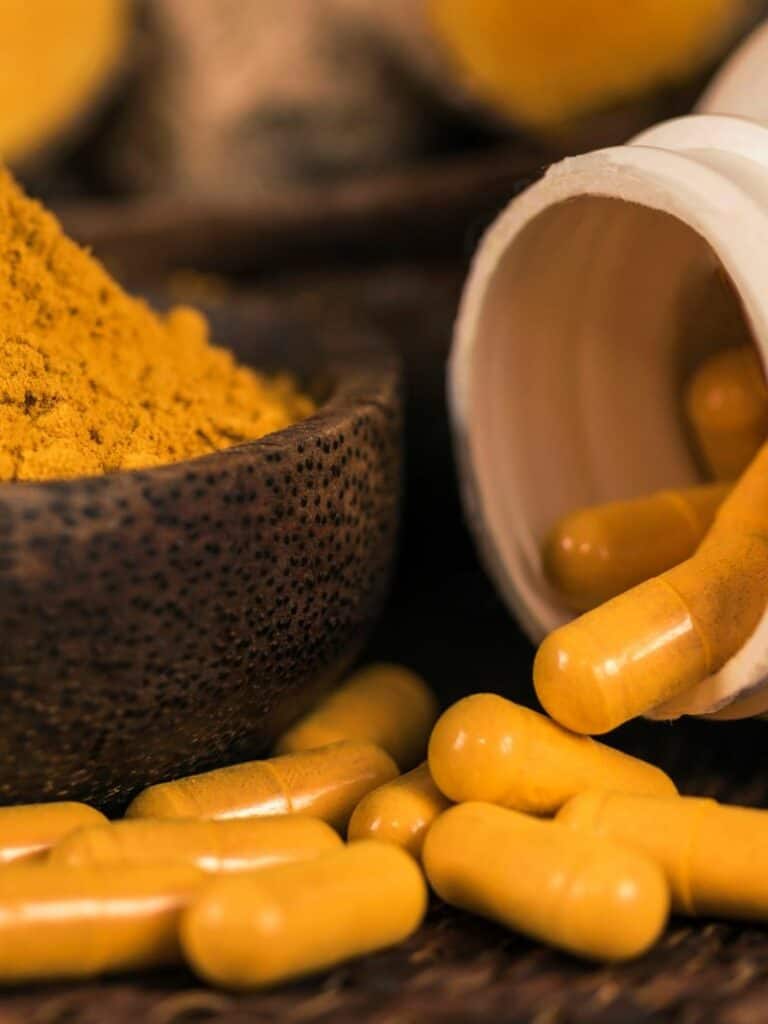
Turmeric is a nutrient-rich
Turmeric contains nutrients including vitamin C, vitamin B6, and manganese, as well as curcumin which is believed to have a number of anti-inflammatory properties.
While turmeric and curcumin have potential therapeutic effects, they should be taken in the right dose and under the guidance and supervision of a healthcare practitioner.
Before taking turmeric supplements, it’s essential to know that precautions are associated with them. Brown states that turmeric supplements are probably not a good idea.
Furthermore, people should avoid taking it if they suffer from gallstones or gallbladder obstruction or are pregnant or lactating. Likewise, turmeric with caution is recommended in case of gout or kidney stones.
When used topically on the skin, some people apply turmeric for pain relief, ringworm, sprains and swellings, bruises, leech bites, eye infections, acne, and other inflammatory skin conditions and skin sores.
The same goes for any infection of the mouth or infected wounds and gum disease.
However, once again, this should only be done under the supervision of a healthcare practitioner before surgery – especially laparoscopic surgeries – although you should still inform your doctor that you are taking any kind of supplement before surgery.
Where to Buy Turmeric?
Turmeric is widely available in grocery stores, health food stores, and online retailers. You can find fresh turmeric root in the produce section of some grocery stores, or you can buy it dried and ground in the
If you’re looking for high-quality turmeric, look for products that are certified organic and non-GMO.
It’s also a good idea to check the ingredient list to make sure that the product contains only turmeric and doesn’t include any fillers or additives.
Celebrated for its golden color and its mustard-like taste, turmeric is a key ingredient in curries and stews across Asia.
Added to cakes or steamed milk, turmeric is an unexpected treat at the end of a meal.
Buddhist monastic robes, the walls of the temple in Jejuri, and Ayurvedic remedies across India all have turmeric in common.
Turmeric Substitutes
If you don’t have turmeric on hand, or if you’re looking for a substitute with a slightly different flavor profile, several spices and ingredients can work in its place.
Here are some of the best turmeric substitutes:
Saffron
Saffron has a similar vibrant color and a slightly sweet, floral flavor that can work well in recipes that call for turmeric.
Curry Powder
Curry powder is a blend of spices that often includes turmeric and cumin, coriander, and other flavorful ingredients. It can be used as a substitute for turmeric in many recipes, especially those that also call for other curry spices.
Paprika
Paprika is a mild red pepper that can add a warm, smoky flavor and a bright red color to dishes. While it doesn’t have the same anti-inflammatory properties as turmeric, it can be a good substitute for its color and flavor.
Ginger
Fresh or dried ginger can add warmth and
Mustard Powder
The mustard powder has a slightly bitter and pungent flavor that can be similar to turmeric. It can be used in small amounts to add flavor and color to dishes.

